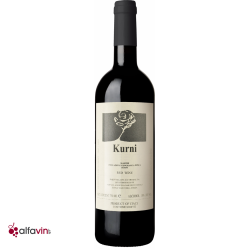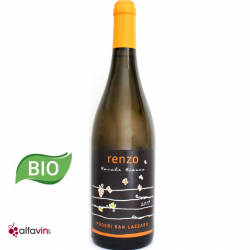All about the hierarchy of Italian wine appellations
If you look at a bottle of quality Italian wine, you will find the following acronyms on the label: DOP, IGP, DOC, DOCG or IGT. What are the differences?
In Italy, the system of Italian appellations has evolved considerably since the 1960s. Despite all the richness and diversity of the country, transcribed in an impressive number of appellations, the system became more readable, until European legislation came back to reorganize the system again not long ago. In summary:
"Old" system
Vino da Tavola: This designation includes all wines that do not fit into a recognized appellation.
IGT: Like other European countries, the Italian IGT (Indicazione Geografica Tipica) correspond to specific but extended territories (vins de pays) and to a more flexible regulation: one can find both varietal wines and the best vintages. Some appellations are as large as regions (Toscana IGT, Sicilia IGT) and include not only good quality wines at affordable prices but also expensive vintages sought after worldwide. This category has allowed some producers to break free from the strict rules of the DO while maintaining an excellent level of quality and recognition.
Created in 1963, DOCs (Denominazione di Origine Controllata = AOC) are well known to the public. Today, there are more than 300 DOC appellations. They impose strict specifications and regulate the use of grape varieties. According to European law, DOCs are since 2012 integrated into the DOP law. However, their use is still allowed as a specific traditional mention.
DOCGs (Denominazione di Origine Controllata et Garantita, the equivalent of a "grand cru"), also under the umbrella of the DOP rule, are subject to stricter standards: a set production volume, a serial number and possibly a tasting before bottling. The appellation is granted to wines already recognized as DOC for at least 5 years and approved by ministerial decree. The number of DOCGs has drastically increased to 73 appellations in 2010. Most of them are in the regions of Piedmont (9 DOCG, including Barbaresco, Barolo, Gattinara, Moscato d'Asti and Roero), Tuscany (7 DOCG, including Chianti Classico, Carmignano and Brunello di Montalcino) and Veneto (including Amarone della Valpollicella and Recioto della Valpolicella).
New system
The DOP system: The DOP (Denominazione di Origine Protetta = PDO) is an appellation widely used at European level. This designation distinguishes the belonging to a specific geographical environment produced and processed according to a precise specification. Since 2010, it is (in principle) supposed to encompass and replace the DOC and DOCG designations.
The PGI system (Indicazion Geografica Protteta) is also derived from European legislation. It applies to the agricultural and wine sectors and is linked to a geographical origin. It consecrates and protects a know-how or a determined qualitý attributable to a geographical origin.
At the consumer level, a slight confusion is worth discussing: it is customary to think that these DOC/DOPs are indicators of wine quality. In a way, this statement is understandable, since the appellation system has implied a considerable improvement in the level of wines. On the other hand, in its strict sense, a DOC represents more a guarantee of the origin of the grapes and of the respect of the production methods than a guarantee of excellence.
Very well, then, how can we find our way around in concrete terms?
By basing yourself on the tasting notes attributed by certain recognized tasters or simply by asking your favorite wine shop for advice, which will be able to guide you and advise you according to your tastes and your budget!
Visit our online Italian wine store to consult all the Italian appellations.
Discover also our wine subscription gift cards to offer as gifts or for yourself.









